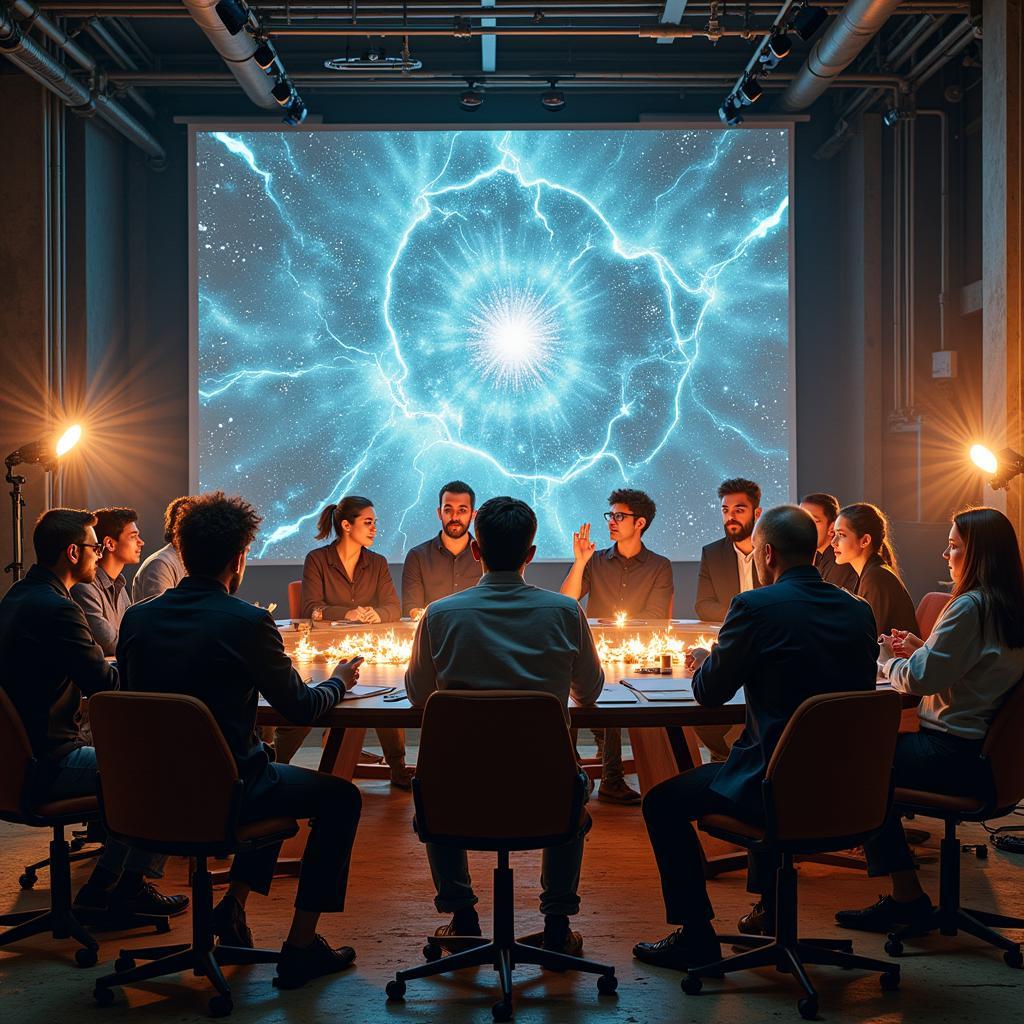The rapid evolution of artificial intelligence (AI) has unleashed a wave of innovative tools and techniques across various sectors, including the creative realm. While AI offers exciting possibilities for artistic exploration and expression, it also raises ethical questions, particularly concerning the concept of “Cheating Art.” This article delves into the complex relationship between AI and creativity, examining the potential benefits and ethical dilemmas surrounding its use in art generation.
 AI-Generated Art Controversy
AI-Generated Art Controversy
The Rise of AI Art Generators
AI art generators, powered by complex algorithms and vast datasets, have gained significant traction in recent years. These sophisticated programs can produce visually stunning and intricate artworks in various styles, ranging from classical painting to contemporary digital art. By inputting specific parameters, such as desired subjects, color palettes, and artistic styles, users can guide the AI to generate unique pieces of art.
This accessibility and ease of use have democratized art creation, allowing individuals with limited artistic experience to explore their creative potential. However, this newfound accessibility also raises concerns about the authenticity and originality of AI-generated art.
Is AI Art “Real” Art?
The question of whether AI-generated art can be considered “real” art is a subject of ongoing debate. Critics argue that AI art lacks the emotional depth, intentionality, and human touch that characterize traditional art forms. They contend that AI merely mimics existing artistic styles and patterns without truly understanding or conveying the emotions and ideas behind them.
Conversely, proponents of AI art emphasize its transformative potential, highlighting the collaborative aspect between human creativity and machine intelligence. They argue that AI tools can serve as powerful assistants, expanding the boundaries of artistic expression and enabling artists to explore new creative avenues.
“AI is not here to replace artists but to empower them. It’s a tool that can augment human creativity and push the boundaries of what’s possible in art.” – Dr. Emily Carter, AI Art Researcher.
The Ethical Dilemma: Originality and Ownership
One of the most pressing ethical concerns surrounding AI art is the issue of originality and ownership. Since AI algorithms learn from existing datasets of images and artworks, questions arise regarding the potential for plagiarism and copyright infringement. Determining the rightful owner of an AI-generated artwork, especially when it draws inspiration from copyrighted material, presents a complex legal and ethical challenge.
Furthermore, the ability of AI to generate art that closely resembles the style of specific artists raises concerns about artistic identity and potential misuse.
Cheating Art or Creative Collaboration?
The use of AI in art creation challenges traditional notions of artistic skill and the effort required to produce art. Some argue that relying heavily on AI tools diminishes the value of human creativity and skill, while others view it as a natural progression in the evolution of art.
The key, perhaps, lies in finding a balance between human ingenuity and AI assistance. Rather than viewing AI as a threat to artistic integrity, embracing it as a collaborative partner can lead to exciting new forms of artistic expression.
Conclusion: Navigating the Future of Art in the Age of AI
As AI technology continues to advance, so too will its impact on the art world. The ethical dilemmas surrounding “cheating art” are likely to persist, requiring ongoing dialogue and critical examination. Ultimately, the future of art in the age of AI hinges on our ability to embrace the creative potential of these technologies while upholding ethical considerations and celebrating the unique contributions of both human and artificial intelligence.